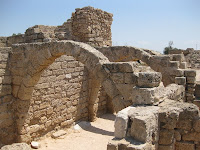
From April 24-28, 2010 I went on a once in a lifetime trip to Erbil, Iraq. Lufthansa Airlines launched service from Frankfurt to Erbil on April 24th, and due to my having sent many Corporate clients there recently, I was invited along. We were in Erbil Iraq only 24 hours during the trip. Erbil is in Kurdistan in Northern Iraq, and one of the few places in Iraq that many westerners can obtain a Visa on arrival.
The moment we landed in Iraq, I had a number of questions running through my head: Will I be safe? What will I see? What are the people like? Is it still a war zone?

We were whisked into a VIP room at the airport and greeting in a warm and welcoming fashion with a cold drink. I spoke briefly with a local woman who was working for the Embassy temporarily. Her English was quite good and she was pleasant to chat with. From there, we boarded shuttle buses to take us into the city at the Erbil International Hotel. I noted no tanks or soldiers, and only local security on certain corners at at checkpoints. It did not have the appearance of a war zone, but of a growing Middle Eastern city.

The hotel has somewhat of a resort setting, and our luggage was screened on arrival. This is typical to have luggage x-rayed prior to entering hotels, as well as a separate luggage pre-screening at the airport. From the corner suite of my hotel room I could see the Unesco World Heritage Site known as the Citadel. Looking down at the bustling streets and the closeness of the Citadel, I fought back temptation to go out and explore on my own. Our hosts preferred us to be secure in the hotel, and escorted outside of the hotel.
We attended an evening VIP reception just outside of the city from another beautiful and peaceful resort-like setting, attended by members of the government and Iraqi Elite, such as the Barzani family. The beer was free-flowing and the food delicious.
After breakfast the following morning, a few of us were brought on a city tour of the Citadel and the local Bazaar. The Citadel is a fascinating site and one of the oldest settlements. In the colourful, winding bazaar we were the only Westerners and certainly had many eyes on us as we explored.

After the city tour, we were treated to a preview of the new Erbil airport, which is scheduled to open at some point in June 2010. It's a gorgeous building that is a source of great pride for the people of Northern Iraq. Our hosts rocketed us in SUV's down the new runway, which is the 5th longest public runway in the world. Following that, our hosts at Lufthansa officially launched the new service, with members of the Iraqi media,. local dignitaries, and again members of the Barzani family. There was a cake, ribbon cutting, and many speeches about how proud and excited the local people and Lufthansa were to bring this much-needed service back to Iraq. This is the first service Lufthansa has had into Iraq in many years, with Baghdad scheduled to follow this fall.
As I boarded the Lufthansa jet to fly back to Frankfurt, I felt confident that I had some good answers to my questions:
Will I be safe? - Yes, at all points I felt very safe. Not just because of the security guiding us through, but because there were no "incidents", no bombs going off, no shooting....just the buzz of a busy city.
What will I see? - A growing Middle Eastern City that is proud of where it has come from and where it is going
What are the people like? - Friendly and welcoming, and hopeful for the future of their country. Although they look back to some of the horrors or the past, they also look forward to progress and peace. We were advised that the North is tolerant and respectful of all different cultures and religions.
Is it still a war zone? - Erbil did not/is not experiencing the same volatility and the central and southern areas, although there have been many incidents lately in border towns north of Erbil, and there are ongoing feuds, skirmishes, and incidents in the southern part of Kurdistan.
I left the country hopeful for a better, more secure future for the people that I met, and deeply moved by their experiences.











